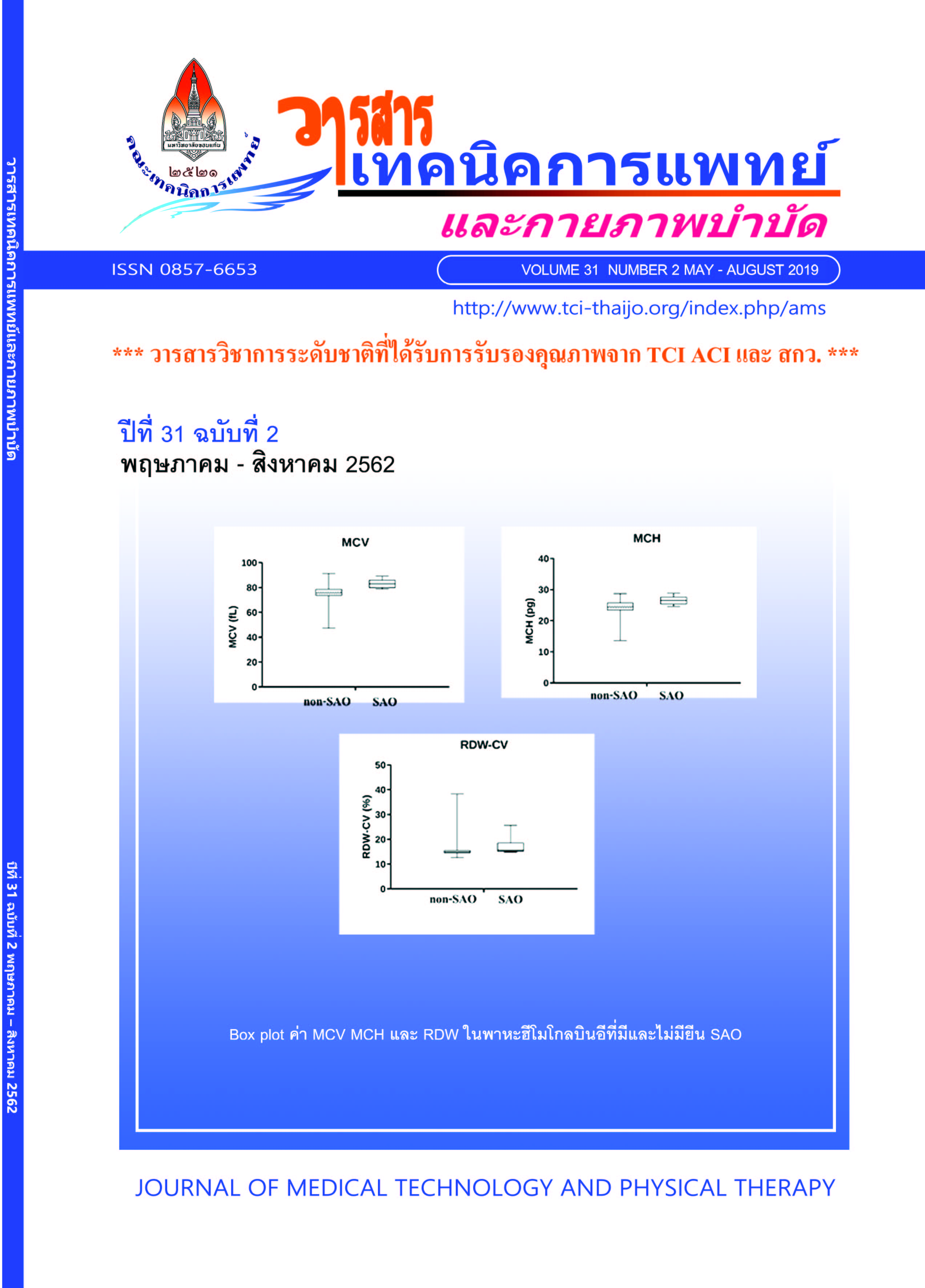Balance ability, leg muscle strength and risks of falling among overweight older adult
Main Article Content
Abstract
Background and Objective: Overweight is one of the most common problems in the elderly which is also the factor associated with falling in the elderly. The purpose of this study was to compare the balance ability tested by timed up and go test (TUGT), leg muscle strength and five times sit-to-stand (FTSST) performance between elderly with overweight and normal weight. Method: Thirty-two healthy elderly were divided into two groups including normal weight elderly (n=16) and overweight elderly (n=16). The subject in both groups were same gender and age as matched pairs design. All participants were assessed on balance ability by TUGT, FTSST, and leg muscle strength by a Push-pull dynamometer. The Independent sample t-test was used to compare the difference of all variables between groups where the significant levels was set at p < 0.05. Results: The results showed that overweight elderly group used more duration of time to perform TUGT and FTSST, and had less leg maximum voluntary contraction (MVC) normalized to body weight than normal weight elderly group significantly (p < 0.01). Conclusion: Overweight elderly seem to have more impaired balance, higher risk of fall, as well as less leg muscle strength than normal weight elderly.

